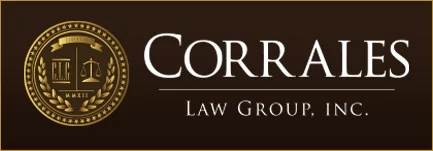California Window Tint Law 2025 Explained

Window tinting in California is a popular choice for vehicle owners seeking privacy and UV protection, but improperly tinted windows can create serious safety risks on the road. When tinting exceeds legal limits or impairs visibility, it can lead to accidents, injuries, or even fatalities.
At Corrales Law Group, our Orange County personal injury attorneys have seen how illegal or excessive window tinting contributes to collisions, leaving victims with medical bills, lost wages, and emotional trauma. Understanding California’s window tint laws can help prevent accidents, and if you’ve been injured due to someone else’s negligence involving tinted windows, we’re here to help you seek justice.
Benefits and Uses of Window Tints in California
Window tinting in California offers a variety of benefits, making it a popular choice for vehicle owners. One of the primary advantages is privacy, as tinted windows provide a level of security by making it harder for outsiders to see into your car. This is particularly useful for those who carry valuables or want to maintain a higher level of personal privacy.
Another benefit is protection from UV rays. Window tint helps block harmful ultraviolet (UV) rays, which can reduce sun damage to your skin and the interior of your vehicle. This can help prevent the fading of upholstery and dashboard materials, extending the life of your car’s interior.
Glare reduction is another important feature. Tinted windows can minimize the glare from the sun or headlights, making driving more comfortable and reducing eye strain, especially on long trips. Additionally, window tint helps keep your vehicle cooler by reducing heat from direct sunlight.
While these benefits make window tinting appealing, it’s critical to ensure your tint complies with California laws. Excessive tinting can reduce visibility, increasing the risk of accidents. For example, glare reduction is helpful, but if the tint is too dark, it may obscure your view of pedestrians or oncoming traffic, potentially leading to a collision. If you or a loved one has been injured in an accident caused by a driver with illegal tints, a personal injury attorney can help you pursue compensation for your damages.
Understanding California’s Window Tint Laws
California has specific regulations when it comes to window tinting. California Vehicle Code Section 26708 sets the rules for how dark your window tint can be and regulates the reflectivity of window films. These laws are designed to ensure drivers can maintain visibility while preventing excessive glare or obstruction of vision. There are a few key elements of California’s window tint laws.
For passenger vehicles, at least 70% of light should be able to pass through the front side windows. This ensures that drivers maintain good visibility while still enjoying the privacy and heat reduction benefits of tinted windows. For the rear side windows and back window, the law allows darker tints, but they must not impede the driver’s or passenger’s ability to see or affect the car’s safety features.
Reflective tints are also regulated under California Vehicle Code Section 27608. Excessive reflectivity is not allowed, as it can create a glare that distracts other drivers. Tints with reflective properties are permissible but must not exceed a specific level of reflectiveness.
There are also medical exemptions in place for individuals who need additional protection from the sun. If a doctor provides the necessary documentation, drivers can apply for a permit to have darker tints than what is normally allowed.
These laws aren’t just about avoiding fines. They’re designed to protect everyone on the road. When drivers install tints that are too dark (e.g., below the 70% light transmission requirement for front side windows), they may struggle to see clearly, especially at night or in low-light conditions. This can lead to dangerous situations, such as failing to see a cyclist in a crosswalk or missing a stop sign, resulting in a crash. Victims of such accidents often face serious injuries, from whiplash to traumatic brain injuries, and may need a personal injury attorney to hold the at-fault driver accountable.
How Illegal Window Tints Can Cause Accidents and Injuries
Illegal or excessive window tinting can contribute to accidents in several ways, putting drivers, passengers, and pedestrians at risk. Here are some common scenarios where tinted windows lead to collisions:
-
Reduced Visibility at Night: Tints that block more than 70% of light on front side windows can severely limit a driver’s ability to see in low-light conditions. For example, a driver with 30% tint on their front windows might not see a pedestrian crossing the street at dusk, leading to a devastating collision.
-
Impaired Peripheral Vision: Dark tints on side windows can obscure a driver’s peripheral vision, making it harder to spot vehicles in adjacent lanes or cyclists on the shoulder. This can result in side-swipe accidents or collisions during lane changes.
-
Glare from Reflective Tints: Reflective tints that exceed California’s limits can create blinding glare for other drivers, especially during sunrise or sunset. For instance, a driver on the 405 Freeway might be temporarily blinded by glare from another vehicle’s reflective tint, causing a rear-end collision.
-
Delayed Reaction Times: When visibility is compromised, drivers may take longer to react to hazards. A driver with overly dark tints might not notice a vehicle braking ahead, leading to a chain-reaction crash on a busy California highway.
At Corrales Law Group, we’ve represented clients injured in accidents caused by drivers with illegal window tints. These crashes often result from negligence, and victims may be entitled to compensation for medical expenses, lost income, and pain and suffering.
Common Injuries from Window Tint-Related Accidents
Accidents caused by improper window tinting can lead to a wide range of injuries, from minor to catastrophic. Some of the most common injuries we see at Corrales Law Group include:
-
Whiplash and Neck Injuries: Rear-end collisions caused by a driver’s inability to see braking vehicles often result in whiplash, leading to chronic pain and limited mobility.
-
Broken Bones: Side-swipe accidents due to impaired peripheral vision can cause fractures, especially in the arms, legs, or ribs.
-
Traumatic Brain Injuries (TBIs): High-speed crashes, such as those on California highways, can lead to TBIs if a driver with dark tints fails to stop in time, causing a severe impact.
-
Pedestrian Injuries: Pedestrians hit by drivers with overly tinted windows may suffer severe injuries, including spinal cord damage or internal bleeding, especially if the driver didn’t see them in time.
If you’ve suffered any of these injuries due to a driver with illegal window tints, our personal injury attorneys can help you build a strong case to recover compensation for your medical bills, rehabilitation costs, and emotional distress.
What to Do After an Accident Caused by Improper Window Tinting
If you’ve been injured in an accident caused by a driver with illegal or excessive window tinting, taking the right steps can protect your health and legal rights:
-
Seek Medical Attention: Even if you feel fine, some injuries like whiplash or concussions may not show symptoms immediately. A doctor can document your injuries, which is crucial for your claim.
-
Document the Scene: Take photos of the other vehicle’s windows to show the tint level, as well as the accident scene, vehicle damage, and your injuries. This evidence can help prove the tint contributed to the crash.
-
Gather Witness Statements: If other drivers or pedestrians saw the accident, get their contact information and statements. They may confirm that the other driver’s visibility was impaired by dark tints.
-
Contact a Personal Injury Attorney: At Corrales Law Group, we can investigate whether the other driver’s window tint violated California law and contributed to the accident. We’ll work with accident reconstruction experts and law enforcement to build a strong case, ensuring you receive fair compensation for your injuries.
-
File a Claim: We’ll help you file a personal injury claim against the at-fault driver, seeking damages for medical expenses, lost wages, and pain and suffering. If the driver’s tint was illegal, this can strengthen your case by demonstrating negligence.
Don’t let someone else’s negligence derail your life. Contact us today to discuss your case and explore your legal options.
FAQs
-
How Can Illegal Window Tints Cause Car Accidents in California?
Illegal window tints can reduce a driver’s visibility, especially at night or in low-light conditions. For example, a tint below the 70% light transmission requirement on front side windows can make it hard to see pedestrians or other vehicles, leading to collisions. These accidents often result in injuries like whiplash, broken bones, or even traumatic brain injuries. -
Can I Sue a Driver with Illegal Window Tints After an Accident?
Yes, if the driver’s illegal window tint contributed to the accident, you may have grounds for a personal injury lawsuit. For instance, if their dark tint caused them to miss a stop sign, leading to a crash, you can seek compensation for your injuries. A personal injury attorney can help prove negligence and fight for your rights. -
What Compensation Can I Get After a Tint-Related Accident?
Victims of accidents caused by illegal window tints may be entitled to compensation for medical bills, lost wages, rehabilitation costs, and pain and suffering. For example, if you suffered a spinal injury after a pedestrian accident, our attorneys can help you recover damages to cover surgery and ongoing care. -
How Do I Know If the Other Driver’s Window Tint Was Illegal?
California law requires front side windows to allow at least 70% light transmission. After an accident, law enforcement may test the tint level, or your attorney can hire an expert to measure it. If the tint is too dark, it can be used as evidence of negligence in your personal injury claim.
Speak With a Lawyer From Our Team Today
If you or a loved one has been injured in an accident caused by a driver with illegal window tints, you don’t have to face the aftermath alone. At Corrales Law Group, our experienced California personal injury attorneys are here to help you seek justice and recover compensation for your injuries. We’ll investigate the role of the tinted windows in your accident, build a strong case, and fight for the damages you deserve. Contact us today.
Corrales Law Group
Contact Us Today
Fields Marked With An “*” Are Required
"*" indicates required fields

